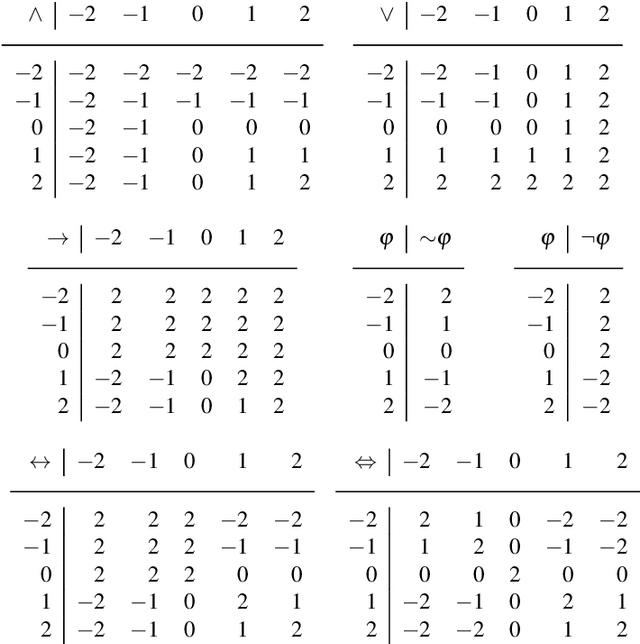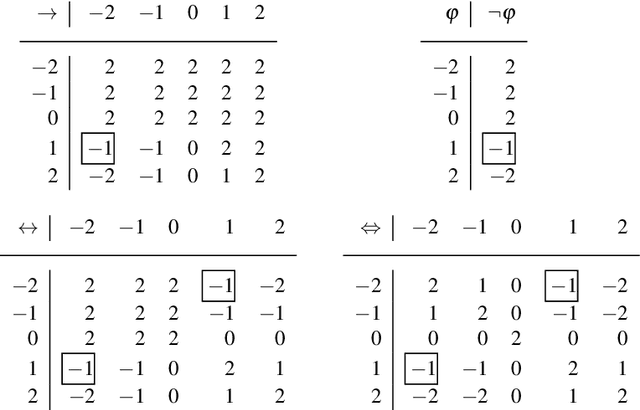Felicidad Aguado
IRLab, CITIC Research Center, University of A Coruña, Spain
Temporal Answer Set Programming
Sep 14, 2020



Abstract:We present an overview on Temporal Logic Programming under the perspective of its application for Knowledge Representation and declarative problem solving. Such programs are the result of combining usual rules with temporal modal operators, as in Linear-time Temporal Logic (LTL). We focus on recent results of the non-monotonic formalism called Temporal Equilibrium Logic (TEL) that is defined for the full syntax of LTL, but performs a model selection criterion based on Equilibrium Logic, a well known logical characterization of Answer Set Programming (ASP). We obtain a proper extension of the stable models semantics for the general case of arbitrary temporal formulas. We recall the basic definitions for TEL and its monotonic basis, the temporal logic of Here-and-There (THT), and study the differences between infinite and finite traces. We also provide other useful results, such as the translation into other formalisms like Quantified Equilibrium Logic or Second-order LTL, and some techniques for computing temporal stable models based on automata. In a second part, we focus on practical aspects, defining a syntactic fragment called temporal logic programs closer to ASP, and explain how this has been exploited in the construction of the solver TELINGO.
A Rule-Based System for Explainable Donor-Patient Matching in Liver Transplantation
Sep 18, 2019Abstract:In this paper we present web-liver, a rule-based system for decision support in the medical domain, focusing on its application in a liver transplantation unit for implementing policies for donor-patient matching. The rule-based system is built on top of an interpreter for logic programs with partial functions, called lppf, that extends the paradigm of Answer Set Programming (ASP) adding two main features: (1) the inclusion of partial functions and (2) the computation of causal explanations for the obtained solutions. The final goal of web-liver is assisting the medical experts in the design of new donor-patient matching policies that take into account not only the patient severity but also the transplantation utility. As an example, we illustrate the tool behaviour with a set of rules that implement the utility index called SOFT.
* In Proceedings ICLP 2019, arXiv:1909.07646
Revisiting Explicit Negation in Answer Set Programming
Jul 26, 2019

Abstract:A common feature in Answer Set Programming is the use of a second negation, stronger than default negation and sometimes called explicit, strong or classical negation. This explicit negation is normally used in front of atoms, rather than allowing its use as a regular operator. In this paper we consider the arbitrary combination of explicit negation with nested expressions, as those defined by Lifschitz, Tang and Turner. We extend the concept of reduct for this new syntax and then prove that it can be captured by an extension of Equilibrium Logic with this second negation. We study some properties of this variant and compare to the already known combination of Equilibrium Logic with Nelson's strong negation. Under consideration for acceptance in TPLP.
Temporal Logic Programs with Variables
Sep 19, 2016

Abstract:In this note we consider the problem of introducing variables in temporal logic programs under the formalism of "Temporal Equilibrium Logic" (TEL), an extension of Answer Set Programming (ASP) for dealing with linear-time modal operators. To this aim, we provide a definition of a first-order version of TEL that shares the syntax of first-order Linear-time Temporal Logic (LTL) but has a different semantics, selecting some LTL models we call "temporal stable models". Then, we consider a subclass of theories (called "splittable temporal logic programs") that are close to usual logic programs but allowing a restricted use of temporal operators. In this setting, we provide a syntactic definition of "safe variables" that suffices to show the property of "domain independence" -- that is, addition of arbitrary elements in the universe does not vary the set of temporal stable models. Finally, we present a method for computing the derivable facts by constructing a non-temporal logic program with variables that is fed to a standard ASP grounder. The information provided by the grounder is then used to generate a subset of ground temporal rules which is equivalent to (and generally smaller than) the full program instantiation.
 Add to Chrome
Add to Chrome Add to Firefox
Add to Firefox Add to Edge
Add to Edge